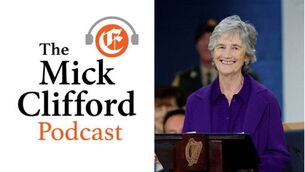Cork Council Merger: ‘Amalgamation will downgrade the status of the city’

But it is a sub-optimal decision for Cork City and County. An amalgamation of the two local authorities will downgrade the status of the country’s second largest city and undermine its capacity to function as the economic driver for the Munster region.
The most critical point which emerges from the CLGR public consultations and from international research is that cities drive regions. They provide the nucleus for economic activity and social development. This point is unequivocal.
This should not be taken to mean that rural areas can be allowed to atrophy. On the contrary, the research is clear, economic activity grows outward from the city and drives development across the region.
Governance arrangements should reflect this. The city should be at the centre of decision making. This will not be the case in an amalgamated authority. A dynamic of conflict over resources and policy focus will be created between the city and county, to the detriment of both.
Ireland has a long history of localist politics. The national picture is often ignored in favour of getting more resources for the local area. We need only think of recurring debates about hospitals, schools, and roads.
Local government is bedevilled by this parochial approach. This fact of political life must be part of the analysis when decisions are being taken about new governance structures. In an amalgamated authority, Cork City will have to compete with rural areas.
At all times, Cork City could be outvoted by the two other districts. This will lead to never-ending negotiation and bargaining. In political science we call this logrolling and pork barrel politics. It is not a formula for clarity and accountability. Already in recently-amalgamated authorities, there is ongoing tension among councillors about how resources are being distributed.
Urban and rural areas have distinctive economic and social needs and this is reflected in differing expenditure patterns and service provision by city councils and county councils.
Cities prioritise spending on housing, environmental services, and recreational amenities while the single largest item of expenditure by county councils is on roads. Amalgamating local authorities will not change these spending needs, but it does raise a concern that there may be dilution of focus within the new much larger authority. This is a grave consideration. For example, the challenges of urban decay and rural isolation need greater focus, not loss of priority in the complex environment of creating a new super structure.
Ireland’s experience with super structures is mixed. The HSE should cause all to reflect on rash moves to amalgamate and much closer to home the position of Cork Airport within the Dublin Airport Authority is very contentious.
As it stands, Cork City is autonomous and in possession of its own budget. It has the right to plan its future within national guidelines. Under the amalgamation plans, Cork City Council will become a municipal district. It will be significantly denuded of powers and functions.
Most crucially it will not have any independent budgetary power. For 40 years, successive reports criticised the weak financial autonomy of local authorities in Ireland. It took the economic crisis to finally create the property tax as a partial solution.
The analysis that local authorities need substantial financial autonomy to be effective is widely accepted. Therefore, it cannot be coherently argued that Cork City will have effective management capabilities in the absence of budgetary powers.
The international experience of amalgamations is at best mixed. There is a trend in European countries to merge smaller units but these countries often have far smaller local government units to begin with, more comparable to town councils or in the case of France and Spain village districts.
Ireland is already at the upper end of the scale in Europe in terms of the size of its local government units. Ireland has just 31 local authorities while Finland has 336, the Netherlands has 441, and Belgium has 589.
Much closer to home in Belfast, it was decided that the city of Belfast should be expanded significantly and it was not part of the wave of mergers which took place across Northern Ireland. The submersion of Cork City in an amalgamated countywide authority would destroy its competitive edge, and capacity to compete directly with Belfast.
Amalgamating large urban and rural authorities is not a feature of local government reforms across Europe, if anything the focus is on strengthening urban governance and coming to grips with the kinds of problems in Cork where the city has grown massively beyond its administrative boundary.
The impetus across Europe is to empower cities to compete at national and global level. Comparisons of the new Cork authority as being similar to Dublin City Council ignore the fact that Dublin City Council has a population density of 3,500 people per square kilometre which is multiples of the figure for Cork City and County.
A large boundary extension would be financially complex. But it is our view that the financial challenges are not insurmountable and, in and of themselves, are insufficient to ignore the negative consequences of amalgamation for economic development and local democracy.
Local government spending has been cut massively during the recession and staff numbers are down by almost 25%. The costs of the boundary extension will only rise. It is to be hoped that reason will prevail, in the development of strong city and strong county authorities, over fashion and fad.
Prof Dermot Keogh and Dr Theresa Reidy were members of the Cork Local Government Review.
















